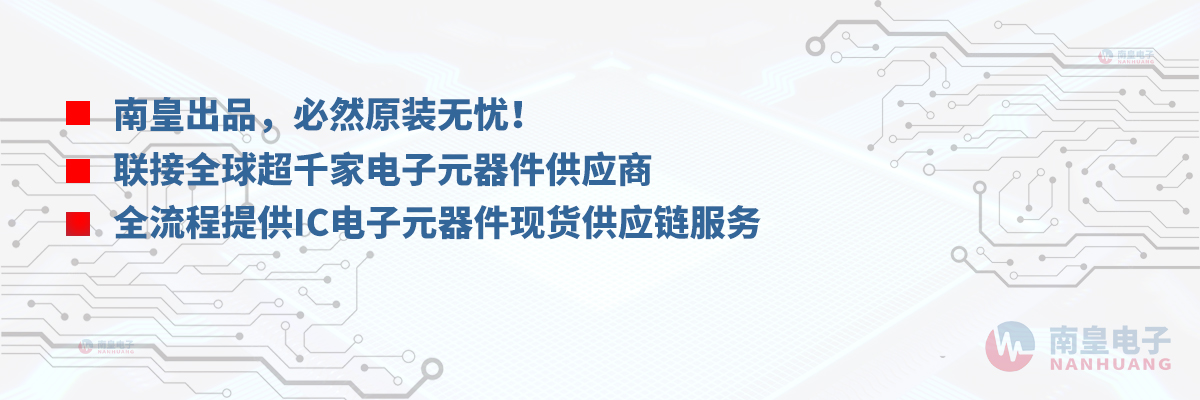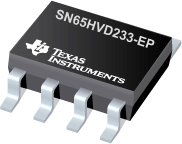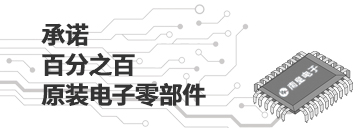

SN65HVD233-EP是TI公司的一款无产品,SN65HVD233-EP是增强型产品 3.3V CAN 收发器,本页介绍了SN65HVD233-EP的产品说明、应用、特性等,并给出了与SN65HVD233-EP相关的TI元器件型号供参考。
SN65HVD233-EP - 增强型产品 3.3V CAN 收发器 - 无 - CAN收发器 - TI公司(Texas Instruments,德州仪器)
The SN65HVD233 is used in applications employing the controller area network (CAN) serial communication physical layer in accordance with the ISO 11898 standard. As a CAN transceiver, it provides transmit and receive capability between the differential CAN bus and a CAN controller, with signaling rates up to 1 Mbps.
Designed for operation in especially harsh environments, the device features cross-wire, overvoltage and loss of ground protection to ±36 V, with overtemperature protection and common-mode transient protection of ±100 V. This device operates over a –7-V to 12-V common-mode range with a maximum of 60 nodes on a bus.
If the common-mode range is restricted to the ISO-11898 Standard range of –2 V to 7 V, up to 120 nodes may be connected on a bus. This transceiver interfaces the single-ended CAN controller with the differential CAN bus found in industrial, building automation, and automotive applications.
The RS (pin 8) of the SN65HVD233 provides for three modes of operation: high-speed, slope control, or low-power standby mode. The high-speed mode of operation is selected by connecting RS directly to ground, allowing the driver output transistors to switch on and off as fast as possible with no limitation on the rise and fall slope. The rise and fall slope can be adjusted by connecting a resistor to ground at RS, since the slope is proportional to the pin's output current. Slope control is implemented with a resistor value of 10 k to achieve a slew rate of 15 V/µs and a value of 100 k to achieve 2.0 V/µs slew rate. For more information about slope control, refer to the application information section.
The SN65HVD233 enters a low-current standby mode during which the driver is switched off and the receiver remains active if a high logic level is applied to RS. The local protocol controller reverses this low-current standby mode when it needs to transmit to the bus.
A logic high on the loopback LBK (pin 5) of the SN65HVD233 places the bus output and bus input in a high-impedance state. The remaining circuit remains active and available for driver to receiver loopback, self-diagnostic node functions without disturbing the bus.
- Bus-Pin Fault Protection Exceeds ±36 V
- Bus-Pin ESD Protection Exceeds 16-kV HBM
- Compatible With ISO 11898
- Signaling Rates(1) up to 1 Mbps
- Extended –7-V to 12-V Common-Mode Range
- High-Input Impedance Allows for 120 Nodes
- LVTTL I/Os Are 5-V Tolerant
- Adjustable Driver Transition Times for Improved Signal Quality
- Unpowered Node Does Not Disturb the Bus
- Low-Current Standby Mode . . . 200-µA Typical
- Thermal Shutdown Protection
- Power-Up/Down Glitch-Free Bus Inputs and Outputs
- High Input Impedance With Low VCC
- Monolithic Output During Power Cycling
- Loopback for Diagnostic Functions Available
- DeviceNet Vendor ID #806(1)
- SUPPORTS DEFENSE, AEROSPACE, AND MEDICAL APPLICATIONS
- Controlled Baseline
- One Assembly/Test Site
- One Fabrication Site
- Available in Military (–55°C/125°C) Temperature Range(1)
- Extended Product Life Cycle
- Extended Product-Change Notification
- Product Traceability
- APPLICATIONS
- CAN Data Bus
- Industrial Automation
- DeviceNet Data Buses
- Smart Distributed Systems (SDS™)
- SAE J1939 Standard Data Bus Interface
- NMEA 2000 Standard Data Bus Interface
- ISO 11783 Standard Data Bus Interface
(1) The signaling rate of a line is the number of voltage transitions that are made per second expressed in the units bps (bits per second). (1) Additional temperature ranges available - contact factory DeviceNet is a trademark of Open DeviceNet Vendor Association.








